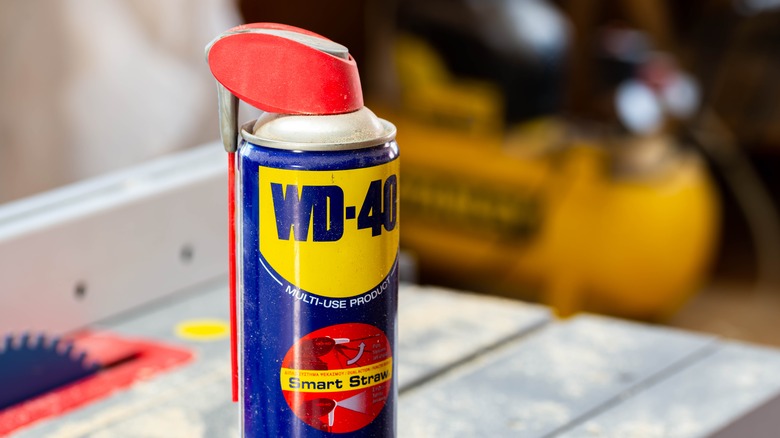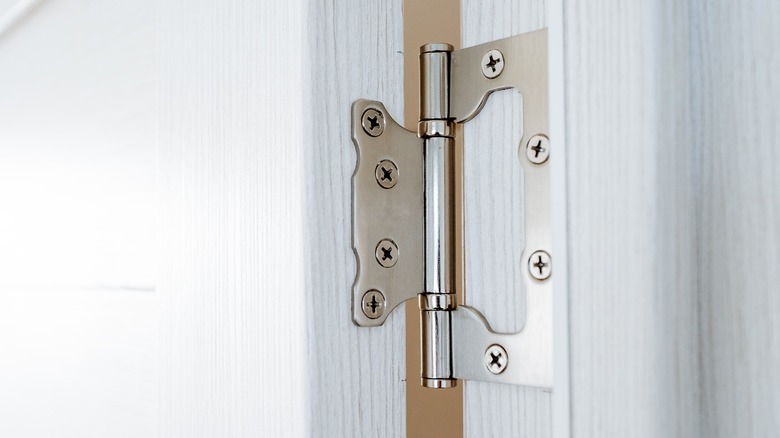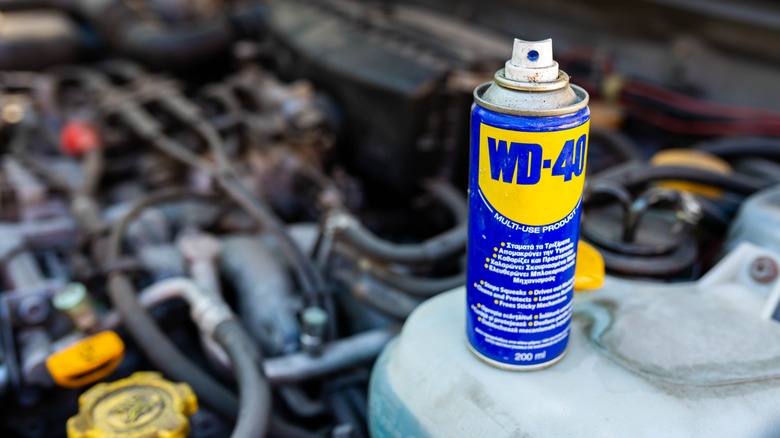WD-40 Serves So Many Purposes, But It Shouldn't Be Used On Door Hinges
There are a plethora of WD-40 tips and tricks out there — from removing residue stickers to getting scuff marks off the floor, it sounds like a miracle product that could fix almost any house issue. That's why you might be surprised to hear you really shouldn't use it on door hinges. After all, in many people's minds, that's its main purpose! If a door squeaks when it opens or feels stuck on its hinges, most of us reach for a can of WD-40. But you could be doing more harm than good with that fix.
The issue is that the thick lubricant will attract dust and grime, clogging your hinges rather than oiling them. The product uses a secret mix of lubricants, which gives it its viscous quality. While it might help remove a door squeak or creak, it will also sit on your hinges for some time, acting like a sticker trap for any floating dirt or dust. You can avoid this if you remove the oil afterward with hot water and soap, but it's an extra step most people don't want to take, so it's best to simply not use it on door hinges.
How to properly oil door hinges
If you can't use WD-40 to silence squeaky doors, then what can you use to fix them? Your best bet is a silicone lubricant. It's a super slippery spray that is known for its smoothness and water-repellent properties. It creates a sleek barrier around the hinge, helping it glide easier. But since it dries clear and isn't sticky, it won't attract dust and trap dirt like WD-40 does.
You can also try using paraffin wax on the hinges. Here's how it works: First, locate the squeaky hinge and remove its pin. Then, grab your wax and melt it in the microwave in 15-second increments, keeping a close eye so as not to burn it. Once it's fully melted, dip the pin into the wax. Once the pin is fully covered in wax, remove it and let it air dry. Pop it back into its hinge, and the door should be squeak-free.
What to use WD-40 on instead
If you think your can of WD-40 is now useless, think again! While it might attract dust on a door hinge, it can be used in other areas without attracting dirt or discoloration. The lubricant is best used to protect metal from rust and to displace moisture — in fact, the name "WD-40" stands for "Water Displacement, 40th formula," indicating its original intended use as a water displacement product. It's an effective anti-corrosion tool, as it pushes water out and forms a protective barrier on metal surfaces, and it can be applied to everything from outdoor equipment to garden tools. Spritz it on your wrenches and chainsaws to keep them from browning, as well as your shovels and garden shears.
Its water displacement skills also help it penetrate and loosen rusted or corroded parts, making it easier to remove stuck-on nuts, bolts, screws, and other fasteners. There are still lots of uses for it, so hang onto that can!


